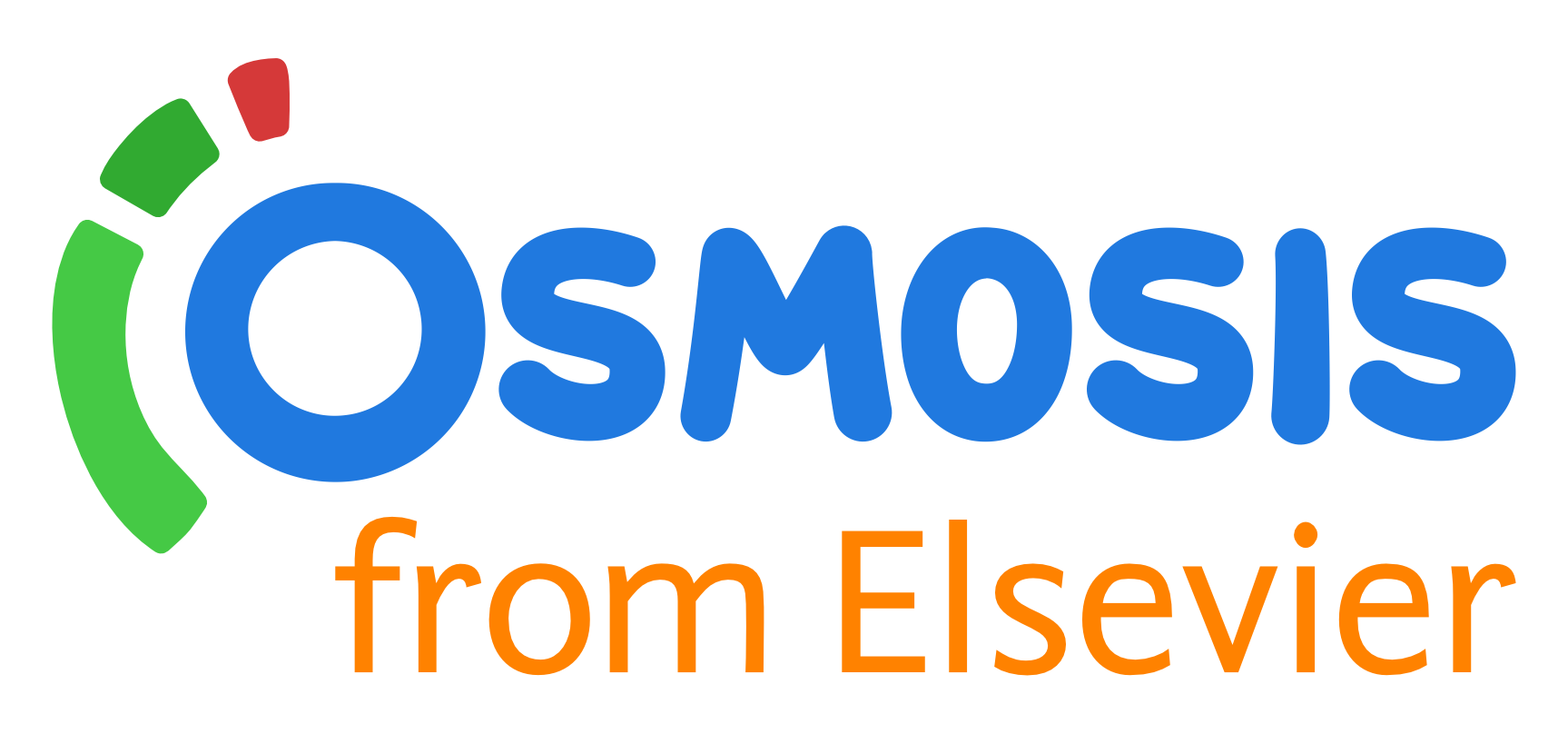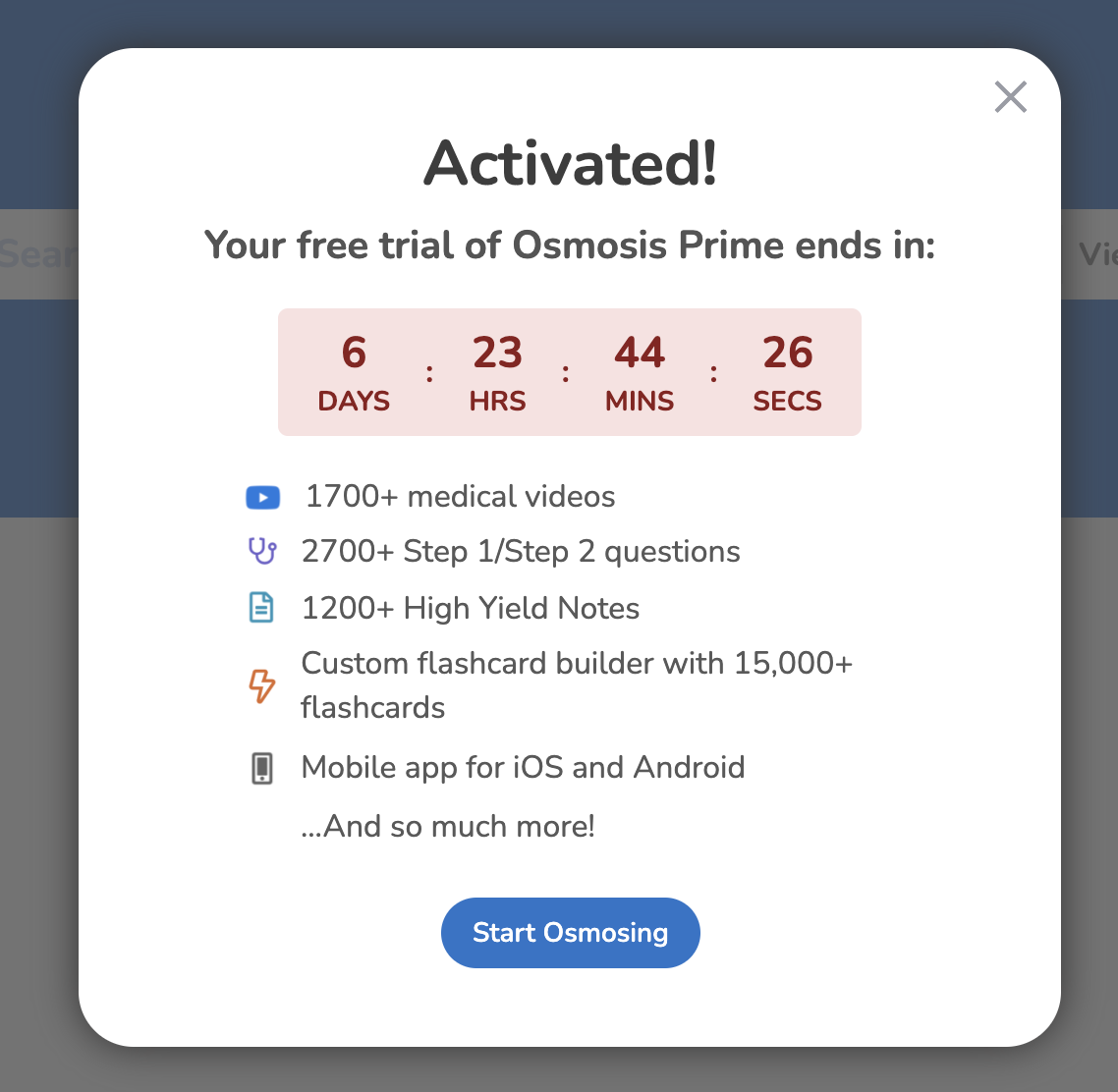How Osmosis from Elsevier increased conversions by 35% with best-in-class onboarding

Results
35% conversion rate increase among users who viewed free trial countdown clock
Products used
Experience Pendo, personalized to you
Get a demoEducation is a journey, not a destination. No matter how much we learn, we can always learn more and apply our knowledge and insights better. That’s a lesson the team behind Osmosis from Elsevier takes to heart when it comes to continually improving their product.
Osmosis is an online learning platform used by over 200 medical, nursing, and health professional programs to teach and empower the next generation of clinicians. Whether it’s enabling self-guided study, fostering collaboration, or supporting “flipped” classrooms and other hybrid instruction models, Osmosis is designed to help health professionals learn better, faster, and deeper.
So when the Osmosis team set about solving the problem of increasing paid subscribers, they began with the assumption that what’s good for the user is good for the business. In other words, a better user experience was key to driving both stronger learning outcomes and better business results. With that in mind, they set about radically optimizing Osmosis’ onboarding process—and cultivating a culture of iteration and experimentation in the process.
From insight to delight: The road to a better user experience
The project began with the Osmosis team thinking big about building the best possible onboarding experience. “We set forth to achieve as much as possible, but to do it simply and concisely, and to avoid frustration points, barriers, or cognitive overload for users,” explained Kaia Chessen, a UX researcher on the team.
In designing a better onboarding journey, Chessen and team turned to Pendo’s all-in-one product experience platform—both to get the answers to crucial UX-related questions and to design the right motions based on those insights. “To be successful, we needed to understand our customers’ motivations,” Chessen said. “Which problems would our users be trying to solve in their first interaction? What meaningful actions could we suggest while showing users how to use our product to be successful in their own goals? How could we motivate or encourage users to keep going, and to get the most out of each step as possible?”
To understand and create the ideal experience for their users, Osmosis began running a series of A/B tests for onboarding using Pendo In-app Guides. “Pendo was and is instrumental to our research, facilitating onboarding experiments where we can test our hypotheses, and validate them with user behavior data,” said Chessen. Using In-app Guides to create different onboarding flows and Pendo Analytics to see how users responded and behaved while engaging with each option, they were able to gauge the impact of various approaches and implement what was most effective.
Better user outcomes mean better business outcomes
Osmosis’ continued experiments and onboarding iterations gave them a deep view into what was most helpful and important for new users—as well as what motions would make them most likely to convert to paid subscribers. Comparing a “choose your own adventure” style onboarding guide with one more heavily curated, for example, showed them that users preferred having the freedom to choose what content they’d explore at the outset.

Still another experiment involved displaying a free-trial countdown timer to users. “You have a seven-day free trial,” Chessen explained. “New users make an account and they see they have seven days left and it’s counting down.” The Osmosis team found that the subset users who saw this timer were 35% more likely to subscribe than those who didn’t see it. “That was a big surprise,” she said. It turns out that when new users see value clearly and quickly, they’re willing to pay for it when made aware that the free version has a fast-approaching expiration date. This has led to increased revenue and greater risk mitigation for the business.
Building a culture of experimentation to drive continuous improvement
In designing a better onboarding experience, the Osmosis team embraced the core principles of product-led growth. By leveraging the power of the Pendo In-app Guides and Analytics, they were able to discern the best ways to get users to an “aha” moment ASAP and make converting to paid feel like the natural next step.
But even with the onboarding project’s positive results, the team knows its work isn’t done. Improved as Osmosis’ onboarding may be, it can always be better. “Embracing a mindset of continuous improvement and being open to adapting strategies based on user feedback and data analysis is key to success,” Chessen said. “It’s forming hypotheses, testing them, and using Pendo data to iterate and refine the onboarding experience.”
Osmosis has taken a major step in leveraging its product to move the needle for the business—and it’s just getting started.
